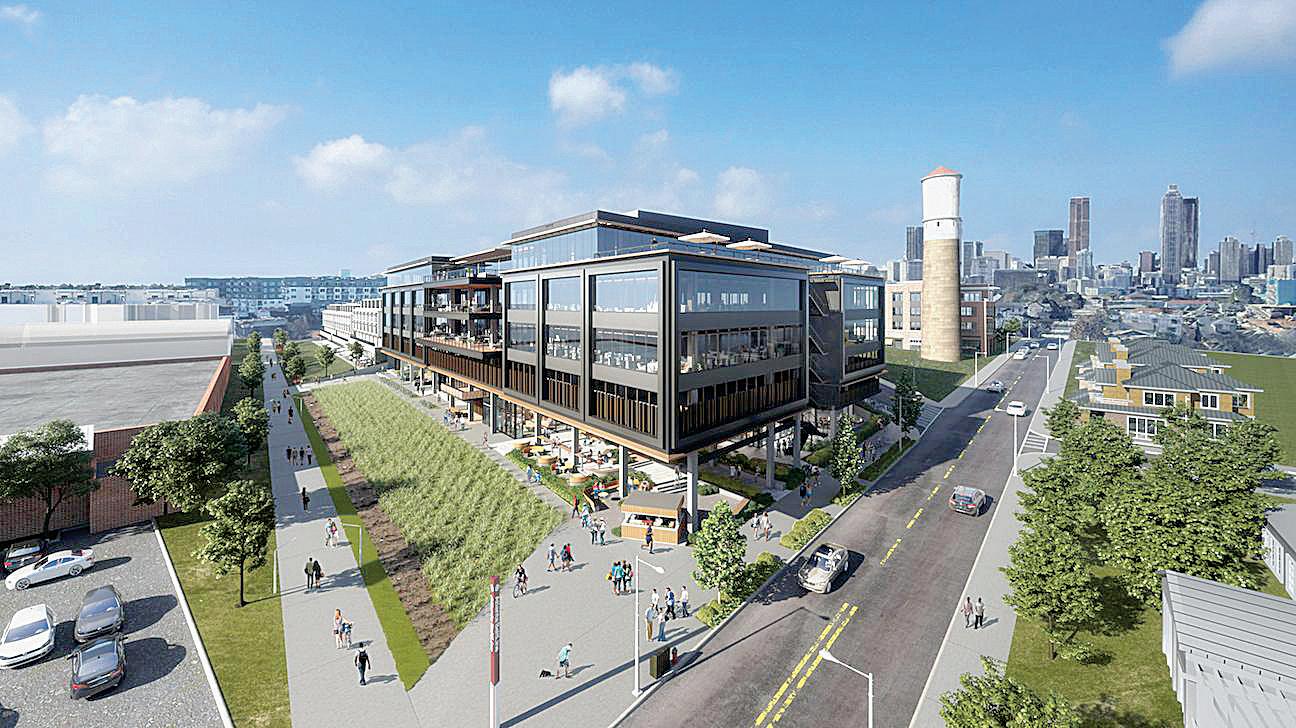Sweet Auburn has lost 47% of its historic buildings By Collin Kelley The National Park Service (NPS) has released a study to help guide future preservation of the Sweet Auburn National Historic Landmark (NHL) District after discovering that the community has lost many of its important buildings. The Integrity and Condition Assessment conducted by New South Associates Inc. on A historic image of Sweet Auburn with Butler Street YMCA visible at center. (Courtesy NPS/Library of Congress)
The Butler Street YMCA is abandoned and deteriorating in Sweet Auburn. (Photo by Darin Givens, @atlurbanist)
BEAT THE TRAFFIC AND
HIT THE TRAIL ON AN E BIKE LARGEST IN-STOCK INVENTORY IN GREATER ATLANTA E-Bike and Accessories Sales and Service in Brookhaven
ElectroBike Georgia 2484 Briarcliff Road, NE Atlanta, GA 30329
www.electrobikega.com
12 DECEMBER 2021 |
Bicycle and E-Bike Rentals, Sales and Repairs on the Beltline
Atlanta Bicycle Barn 151 Sampson Street, NE Atlanta, GA 30312
www.atlbikebarn.com
behalf of NPS found that Sweet Auburn has lost 47% of its historic buildings since being designated as an NHL in 1976. The report states that while several prominent buildings endure, iconic landmarks like the Atlanta Life Insurance Company, Butler Street YMCA and Walden buildings remain vacant after several years and are at risk for deterioration and demolition by neglect. Additionally, development within the district and on its edges challenge ongoing preservation, the report said. “The Sweet Auburn National Historic Landmark District remains an outstanding example of American history and culture,” said Cynthia Walton, regional manager for NPS archeological and historic preservation partnerships. “It also faces serious preservation challenges. With the information collected in this study, the community can better understand and protect the district’s unique character that makes it significant in American history.” Despite the alarming loss of historic buildings noted, the study concludes that “…the district’s remaining historic buildings continue to convey the sense of time and place of a small-scale historic commercial area dating from the 1910s to the 1960s.” The study highlights several preservation successes, including rehabilitation of the Municipal Market and Odd Fellows Building, and establishment of Sweet Auburn Works, a nonprofit serving as an advocacy liaison for the community. The study also shows that the Sweet Auburn NHL District remains a cultural
center for the larger community and calls it “an irreplaceable part of American history.” Maintenance of historic properties, whether as a single building or a large district, requires constant attention and active management. NPS will continue to monitor the Sweet Auburn NHL District and welcomes new information concerning the issues identified in the study. “The NPS will continue to follow proposed projects that may diminish the integrity of the Sweet Auburn NHL District,” Walton said. “We have recommended several steps to improve the overall health of the district, such as updating NHL and National Register documentation to help properties better secure preservation grants. We look forward to assisting the community as it continuously works to achieve its preservation goals.” The Atlanta Preservation Center said preserving Sweet Auburn would be a challenge. “The continued pressures to preserve this significant district are only going to persist,” APC Executive Director David Y. Mitchell said. “The ability to find that space where cultural identity and the needs of today meet is going to only be accomplished by thoughtful engagement on every level. The Atlanta Preservation is looking forward to participating in this work.” The Sweet Auburn National Historic Landmark District was considered the hub of African American prosperity during the late nineteenth and early twentieth centuries. Originally named Wheat Street and renamed Auburn Avenue in 1893, the street became the heart of Atlanta’s Black social, religious, cultural and business activities during the segregated Jim Crow era. It birthed some of the nation’s most successful Black businesses and contributed to Rev. Martin Luther King, Jr.’s formative development. African American businesses converged on the west end of Auburn Avenue, increased in number from 10 to 72 between 1900 and 1920, and eventually led the nation in the concentration of blackowned businesses. The district comprises 18.8 acres along portions of Auburn Avenue, Edgewood Avenue, Piedmont Avenue, Courtland Street, John Wesley Dobbs Ave, and Bell Street. Find out more about the Sweet Auburn NHL District Study by visiting go.nps.gov/ sweetauburn. At l a n t a I n t o w n Pa p e r. c o m












